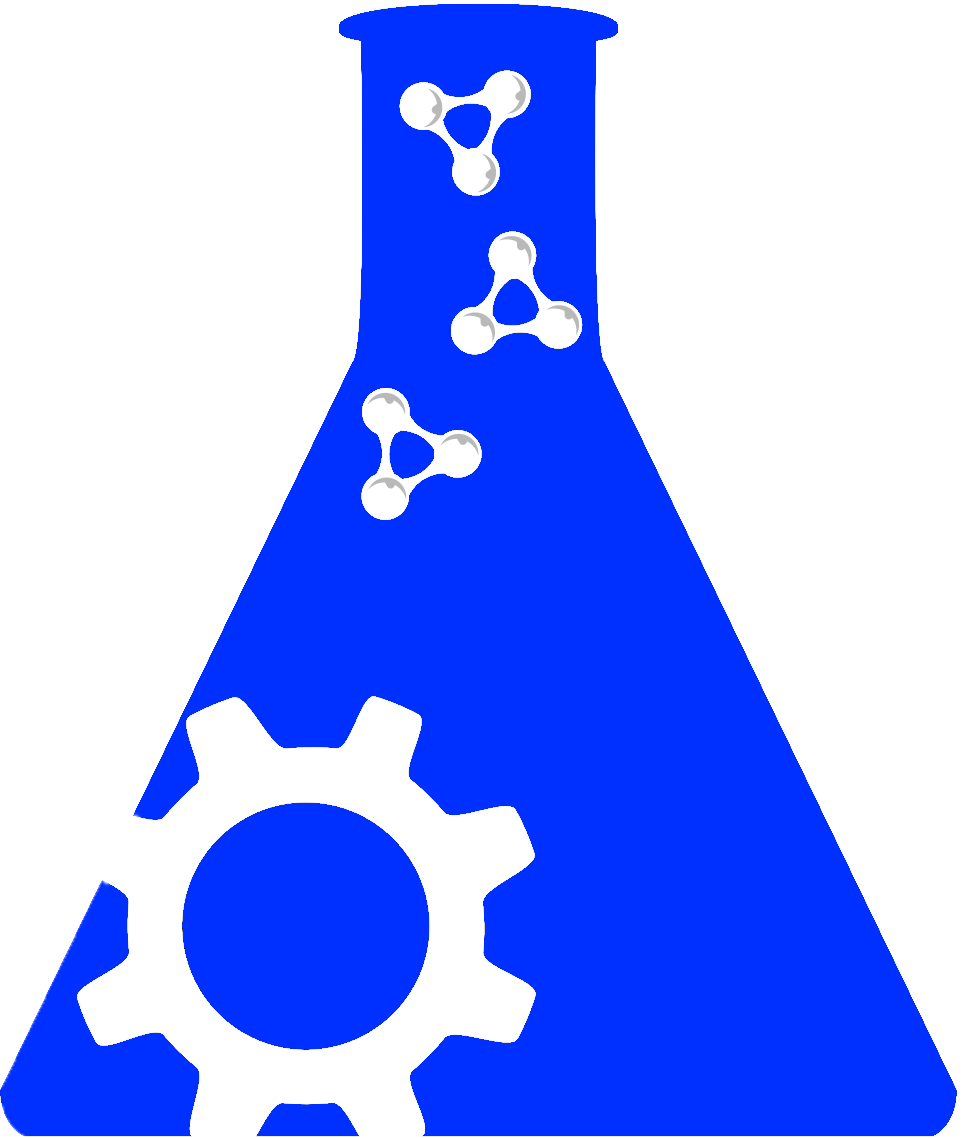X
X
Leaving Community
Are you sure you want to leave this community? Leaving the community will revoke any permissions you have been granted in this community.
No
Yes
X
Total 1028 Results
| Identifiers |
Sentence |
Structure 1 | Structure 2 | Relation Type | Reference URL | |||||
|---|---|---|---|---|---|---|---|---|---|---|
|
View |
PMCID: PMC6781502
Sentence ID: 3947295 Relation ID: 3947299 |
When the ratio of Eudragit® L100, S100, or L100-55 to E100 was altered to 2:1 (formulations 9n, 10n, and 11n), the release of furosemide was reduced in comparison to formulations 5n, 6n, and 7n. | 10n | 7n | topological-connectivity | https://www.ncbi.nlm.nih.gov/pmc/articles/PMC6781502 | 0.988463 | pmc_oai_202111 | ||
|
View |
PMCID: PMC6781502
Sentence ID: 3947295 Relation ID: 3947300 |
When the ratio of Eudragit® L100, S100, or L100-55 to E100 was altered to 2:1 (formulations 9n, 10n, and 11n), the release of furosemide was reduced in comparison to formulations 5n, 6n, and 7n. | 9n | 10n | anatomical-connectivity | https://www.ncbi.nlm.nih.gov/pmc/articles/PMC6781502 | 0.506028 | pmc_oai_202111 | ||
|
View |
PMCID: PMC7314699
Sentence ID: 3947307 Relation ID: 3947310 |
(B) Chromosome counts show an increase in 3n, 4n, and 5n cells in resistant cell lines, especially in MDA‐MB‐361 TR. | 3n | 5n | anatomical-connectivity | https://www.ncbi.nlm.nih.gov/pmc/articles/PMC7314699 | 0.570124 | pmc_oai_202111 | ||
|
View |
PMCID: PMC8027699
Sentence ID: 3947314 Relation ID: 3947317 |
These cytokines activate signals along afferent (sensory) vagus neurons residing in the nodose ganglion and terminating in the brainstem NTS. | vagus | nodose ganglion | topological-connectivity | https://www.ncbi.nlm.nih.gov/pmc/articles/PMC8027699 | 0.729092 | pmc_oai_202111 | ||
|
View |
PMCID: PMC5210382
Sentence ID: 3947334 Relation ID: 3947337 |
The nerve endings in the nasal cavity are part of the trigeminal nerve, and the nerve endings in the trachea and lungs are part of the vagus nerve. | trigeminal nerve | vagus nerve | structural-connectivity | https://www.ncbi.nlm.nih.gov/pmc/articles/PMC5210382 | 0.997061 | pmc_oai_202111 | ||
|
View |
PMCID: PMC6300710
Sentence ID: 3947345 Relation ID: 3947348 |
First, vagal nerve fibers within the cervical vagus nerve may differ in rats and humans, and the specific fibers mediating the response in rats may not travel within the cervical vagus nerve in humans. | vagal nerve | vagus nerve | anatomical-connectivity | https://www.ncbi.nlm.nih.gov/pmc/articles/PMC6300710 | 0.99684 | pmc_oai_202111 | ||
|
View |
PMCID: PMC3929115
Sentence ID: 3947357 Relation ID: 3947360 |
The cell bodies of the carotid sinus nerve reside in the petrosal ganglion. | carotid sinus nerve | petrosal ganglion | topological-connectivity | https://www.ncbi.nlm.nih.gov/pmc/articles/PMC3929115 | 0.822007 | pmc_oai_202111 | ||
|
View |
PMCID: PMC7413808
Sentence ID: 3947392 Relation ID: 3947395 |
Patients with a facial nerve palsy display sensitization of the blink reflex postsynaptic pathways to inputs carried by fibers from the ophthalmic branch of the trigeminal nerve. | facial nerve | trigeminal nerve | structural-connectivity | https://www.ncbi.nlm.nih.gov/pmc/articles/PMC7413808 | 0.729276 | pmc_oai_202111 | ||
|
View |
PMCID: PMC3789932
Sentence ID: 3947398 Relation ID: 3947401 |
CT changes encompass the following: absence of foramen spinosum on the side of PSA, soft tissue lesion in the proximal part of tympanic segment of the facial nerve. | tympanic | facial nerve | anatomical-connectivity | https://www.ncbi.nlm.nih.gov/pmc/articles/PMC3789932 | 0.807636 | pmc_oai_202111 | ||
|
View |
PMCID: PMC6323601
Sentence ID: 3947407 Relation ID: 3947410 |
These anomalies may often mimic the clinical picture of parotid neoplasms and are likely alsoto be associated with facial nerve palsy because of their proximity to the seventh cranial nerve trunk [10]. | facial nerve | seventh cranial nerve | anatomical-connectivity | https://www.ncbi.nlm.nih.gov/pmc/articles/PMC6323601 | 0.763557 | pmc_oai_202111 | ||
|
View |
PMCID: PMC5540006
Sentence ID: 3947414 Relation ID: 3947417 |
It is most common in patients aged 40 to 60 years with a male predominance and typically spreads along the branches of the trigeminal nerve or the facial nerve. | trigeminal nerve | facial nerve | anatomical-connectivity | https://www.ncbi.nlm.nih.gov/pmc/articles/PMC5540006 | 0.803236 | pmc_oai_202111 | ||
|
View |
PMCID: PMC6198892
Sentence ID: 3947428 Relation ID: 3947431 |
Vagal nerve and inferior laryngeal nerve were identified systematically with intermittent nerve monitoring. | Vagal nerve | inferior laryngeal nerve | structural-connectivity | https://www.ncbi.nlm.nih.gov/pmc/articles/PMC6198892 | 0.935989 | pmc_oai_202111 | ||
|
View |
PMCID: PMC6746549
Sentence ID: 3947435 Relation ID: 3947438 |
The brainstem at the level of the obex with the nuclei of the solitary tract, the spinal tract of the trigeminal nerve as well as the dorsal motor nucleus of the vagus nerve (DMNV) are already involved during the late preclinical stage of the disease [7–9]. | trigeminal nerve | vagus nerve | topological-connectivity | https://www.ncbi.nlm.nih.gov/pmc/articles/PMC6746549 | 0.988116 | pmc_oai_202111 | ||
|
View |
PMCID: PMC7703602
Sentence ID: 3947451 Relation ID: 3947454 |
(M–O) eYFP-expressing efferent vagus terminals and mCherry-expressing splenic nerve cell bodies were visualized by immunohistochemistry in the celiac-superior mesenteric ganglion complex. | vagus | mesenteric ganglion | structural-connectivity | https://www.ncbi.nlm.nih.gov/pmc/articles/PMC7703602 | 0.99829 | pmc_oai_202111 | ||
|
View |
PMCID: PMC3763377
Sentence ID: 3947469 Relation ID: 3947472 |
3.2This method involves removing the axon of the vagus nerve which runs caudal to the nodose ganglion. | vagus nerve | nodose ganglion | anatomical-connectivity | https://www.ncbi.nlm.nih.gov/pmc/articles/PMC3763377 | 0.738977 | pmc_oai_202111 | ||
|
View |
PMCID: PMC2104004
Sentence ID: 3947476 Relation ID: 3947479 |
Hicks et al. [20] reported that 56% of lumbar splanchnic nerve fibres from the rat colorectum responded to 5-HT and this figure rose to over 60% in the splanchnic nerve of the cat [21]. | lumbar splanchnic nerve | splanchnic nerve | anatomical-connectivity | https://www.ncbi.nlm.nih.gov/pmc/articles/PMC2104004 | 0.986948 | pmc_oai_202111 | ||
|
View |
PMCID: PMC7540775
Sentence ID: 3947492 Relation ID: 3947495 |
DiceCT sections through the olfactory tracts (a and f), telencephalon (b and g), diencephalon (c and h), region of the trigeminal nerve complex (d and i) and region of the vagus nerve (e and j) in Ambystoma (left-hand column) and Cynops (right-hand column). | trigeminal nerve | vagus nerve | anatomical-connectivity | https://www.ncbi.nlm.nih.gov/pmc/articles/PMC7540775 | 0.99872 | pmc_oai_202111 | ||
|
View |
PMCID: PMC5012092
Sentence ID: 3947504 Relation ID: 3947507 |
The term central has been widened to include the region within 2 cm in all directions of any mediastinal critical structure, including the bronchial tree/trachea, esophagus, heart, brachial plexus, major vessels, spinal cord, phrenic nerve, and recurrent laryngeal nerve. | phrenic nerve | recurrent laryngeal nerve | topological-connectivity | https://www.ncbi.nlm.nih.gov/pmc/articles/PMC5012092 | 0.989511 | pmc_oai_202111 | ||
|
View |
PMCID: PMC6151022
Sentence ID: 3947513 Relation ID: 3947516 |
Coverage of the nerve tract of the lingual nerve, hypoglossal nerve, and facial nerve (marginal mandibular branch) to the skull base might be adequate in preventing morbidity as a result of brain irradiation. | lingual nerve | facial nerve | functional-connectivity | https://www.ncbi.nlm.nih.gov/pmc/articles/PMC6151022 | 0.62934 | pmc_oai_202111 | ||
|
View |
PMCID: PMC6556859
Sentence ID: 3947527 Relation ID: 3947530 |
Proposed sources for the cell of origin of ONBs have included the pterygopalatine ganglion, the olfactory placode, the vomeronasal organ, the terminal nerve, autonomic ganglion in the nasal mucosa, and the olfactory mucosa. | terminal nerve | autonomic ganglion | anatomical-connectivity | https://www.ncbi.nlm.nih.gov/pmc/articles/PMC6556859 | 0.726524 | pmc_oai_202111 |

